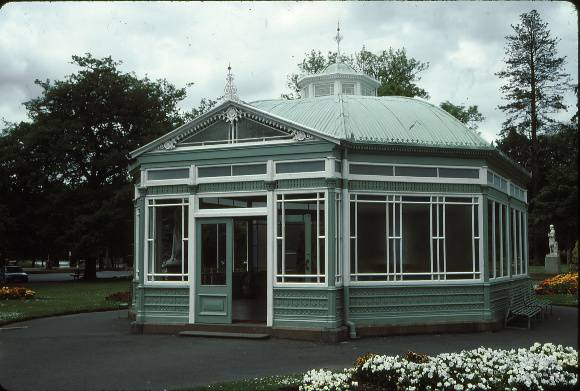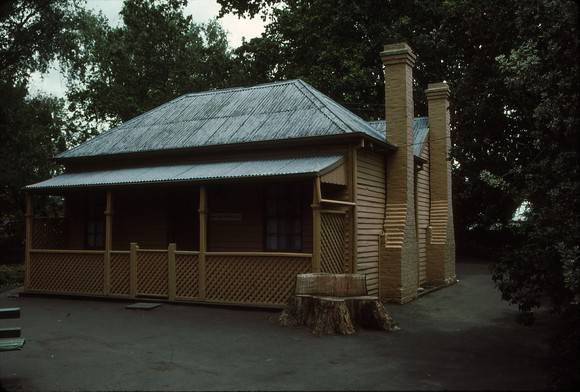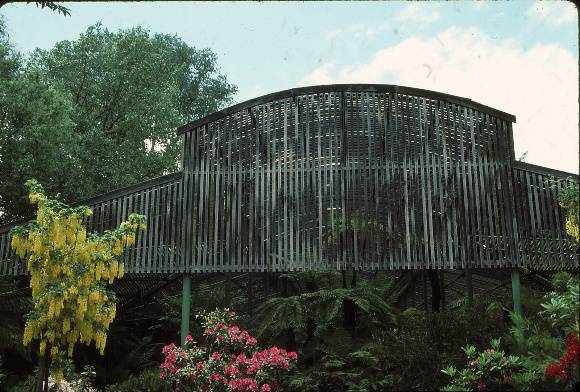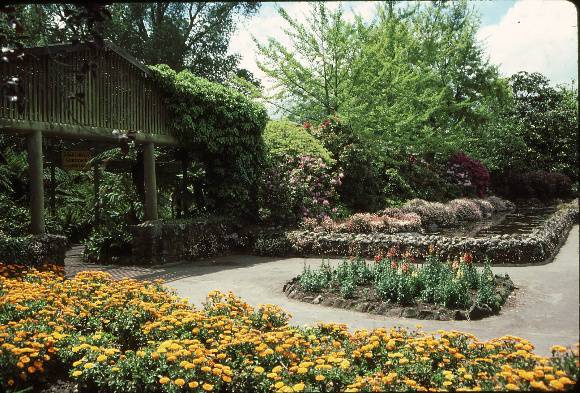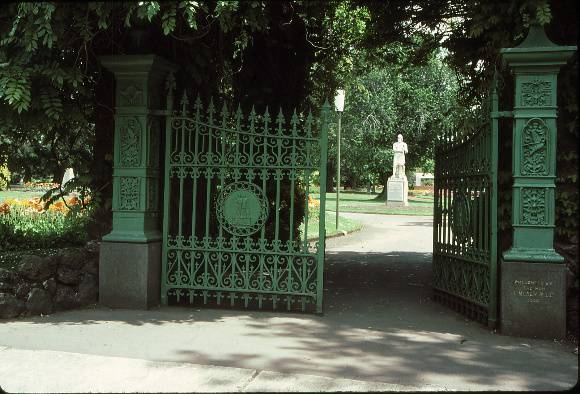| Back to search results » | Back to search page » |
|
Ballarat Botanic Gardens
Other NameBotanic And Public Gardens Reserve, Allotment 2A Of Section Suburban C, Township Of Ballarat, Parish Of Ballarat, County Of Grenville LocationWendouree Parade, BALLARAT VIC 3350 - Property No G13057
File NumberG13057LevelState |
|
Statement of Significance
Ballarat Botanic Gardens, developed from 1858 on a 98 acres site (granted to the Ballarat City Council in 1885) and maintained in continuous use to the present, is of State cultural significance: File note 23/06/2010 : Includes Adam Lindsay Gordon Cottage.
- as a fine and perhaps the best known example of a provincial botanic garden in Australia, a garden type best exemplified in Australia by the network of such gardens created in colonial Victoria; typical characteristics of provincial botanic gardens found at Ballarat include a carriage drive (part of Wendouree Parade), distant vistas across Lake Wendouree, open lawn areas planted with specimen trees, areas of intensive horticultural interest, formal avenues, horticultural buildings such as the shade house and conservatory, embellishments such as garden buildings, fountains and statuary, and a location in proximity to a township developed during the mid-nineteenth century
- for its early layout (shown in plans of 1868 and 1873) and the manner in which this stongly linear form has been retained throughout ensuing development; the principal attributes to survive from the early layout are the alignment and prominence of Wendouree Parade, main north-south path (extending almost to Carlton Street in the south), the roundel (on the Giant Redwood Avenue), the north-south path (parallel to the Giant Redwood Avenue), several east-west paths, some semblance of the curved paths which link the main north-south axes, the concentration of horticultural activities in the central portion of the gardens (with the focus for horticultural buildings at the northern extremity of this precinct, near the fernery), the use of the lake shore for leisure/recreational activities, the relatively open areas to the north and south which act as a buffer for the main portion of the gardens, and the relationship between the gardens and the lake;
- for the manner in which the layout, planting and development reflect different phases in the history of the gardens, none of which have departed so radically from the original plan that the significance of the place has been jeopardised;
- for the continuity over a long period of traditions and themes such as avenues (from Giant Redwood to Prime Ministers), bedding displays, floral displays (especially begonias), use of circular motifs in plan form, recreational use of gardens, statuary (late nineteenth century to present), bequests and high maintenance standards;
- for its collection of plants (especially trees, ferns and conservatory plants), characteristic of nineteenth century and early twentieth century Victorian gardens both in the choice of species and the mode of arrangement; many of the trees are individually significant on account of their size, form, rarity in cultivation and age; as a group the trees form the backbone of the early layout and their character both individually and in groups is a major component of the aesthetic significance of the gardens;
- for the fine demonstration of long established horticultural techniques such as ribbon bedding and cultivation of tuberous begonias (now relatively rare);
- historically for its close and ongoing link with the acclimatisation and zoological gardens movement; this is demonstrated by many of the trees and plants in the gardens, as well as by the trout hatchery;
- for its complementary relationship with Lake Wendouree and features such as Lake Lodge, the Almeida Pavilion and Fairyland; taken together, the botanic gardens and lake form a precinct of outstanding aesthetic, historic and social significance, of special importance in the history of tourist, recreation and leisure;
- for its retention of, and landscaped setting for, a diverse collection of horticultural and recreational buildings, structures and works; these include the Statuary Pavilion (itself of outstanding national significance as a rare and intact nineteenth century pavilion with original statuary), Lake Lodge, Almeida Pavilion, statuary throughout the gardens, conservatory, fernery, fountain, cast iron drinking fountain, remains of early entrance gates, picnic shelter, bandstand and pergolas;
- for its considerable aesthetic significance derived from the mature trees, the splendour and richness of horticultural displays, vistas within the gardens, vistas along avenues (especially the Giant Redwood Avenue), vistas across Lake Wendouree to the skyline silhouette of the gardens, vistas looking to Lake Wendouree from the gardens, the placement of embellishments within the gardens (especially statuary and the absence of large or intrusive buildings in the neighbourhood; the aesthetic significance is enhanced by the comparatively large size of the gardens (especially when taken together with Lake Wendouree) which permits long vistas, and the contrast provided by diverse environments such as the conservatory, the open landscaped areas, the fernery, Fairyland and the open woodland areas to the north and south of the gardens;
- for its ability to demonstrate an understanding of Ballarat's civic pride, especially in the nineteenth century; this importance was based on wealth derived from the richness of Ballarat's goldfields and the means in which this was channelled into civic and cultural enhancement, funded by both the public and private purse; this is exemplified by bequests such Thomas Stoddart's gifts of sculpture, memorialised structures the tradition of commissioning busts of Australian Prime Ministers and the recently-opened Robert Clark Horticultural Centre;
- for its considerable social value; this is derived from its status as one of Victoria's best known and most visited provincial gardens; its use as a venue for the long-running Begonia Festival, for its conservatory facilities and for the complementary setting of the gardens and the lake; and
- for the retention of a rich collection of documentary material which enhances an understanding of the significance of the garden and assists in interpreting this cultural significance to visitors, managers and those working in the garden.
Group
Parks, Gardens and Trees
Category
Garden Botanic


